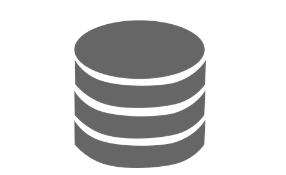
What is a database?
A database is a way of storing information, data, facilitating their organization, management and updating. This information is stored on a storage space in the form of files and indexed in order to facilitate their research. The database management system (or DBMS) is the computer software we use to acces, manipulate and extract data from a database. It serves also as the interface between the user and the database.
A DBMS worthy of its name must handle the data of a Database while guaranteeing its quality, durability and confidentiality. As an interface, a DBMS can include a graphical interface depending on the model. Those that does not, are usually using a third-party software such as phpMyAdmin for MySQL. We can discover the strength of a DBMS by its ability to use basic relationships given by tables to create more complex ones and respond to requests.
Why you need to create a database?
Databases with their DBMS are widely used on the web and in all industries. They are used for managing both small and large amounts of information. Small businesses can use it to efficiently manage inventory as well as cash register, employee information, and more. Likewise, larger companies can use them for the same tasks and more important ones. In particular, management of reservations for airlines, legal registrations for insurance companies.
On the whole, the usage of database is diverse, as they offer:
- Increased data security. The administrator defines who has access to it.
- Better inventory management. We can manage accounting is a easy way, hence minimizing the losses.
- Better customer management. Easily we can store and organize information and interactions
- Centralizing the information system. Thus we can avoid information loss.
Which database to go for?
Many databases exists. However, choosing a database for your project depends strongly on the project, its need and the expectations made. The orginsation of the information in a database may be more suitable for one project more than another one. We pick out:
- Hierarchical databases. It is one of the oldest databases, its organizational structure is a tree structure. Their simplicity has not been able to adapt to the evolution of information systems. However, they made relational databases.
- Relational database or SQL. This database system is extensible, optimal for access management and very powerful in the storage and manipulation of structured data. Nevertheless, it does not adapt well to unstructured data. It is the most widely used database system on the web. As an example, we can find MySQL or MariaDB on the majority of web hosting plans and Linux systems.
- The distributed databases. In this case, all the parts of the database are not located in the same physical location. For this, they offer higher availability.
- The NoSQL databases. Ideal for unstructured data stored on different servers.